
[ad_1]
Hyaluronic acid is likely one of the most in-demand beauty components right now. An extended-time favorite in skincare, hyaluronic acid is now marketed for its high-performance, hydrating properties in bodycare – and now even in haircare. It’s a darling of the cosmetics trade and wonder customers alike.
You could be shocked to be taught that it was found within the early Nineteen Thirties and has been a beauty ingredient for the reason that Nineteen Sixties. However it’s sported on so many beauty labels, you’d suppose it’s a new-found ingredient. In a technique it’s “new” as it’s produced very otherwise right now – as you’ll quickly uncover.
This superhero of hydration definitely deserves our consideration.
Why it’s so feted and what beauty advantages does it convey? Importantly, does it stay as much as the hype?
Right here, we unravel the secrets and techniques of hyaluronic acid – a powerhouse of hydration – wanting past its popularity to discover why it’s a game-changer for indie beauty formulators.
Spoiler alert: hyaluronic acid’s high-performance prospects are nicely inside attain of the brand new beauty formulator!
What’s hyaluronic acid?
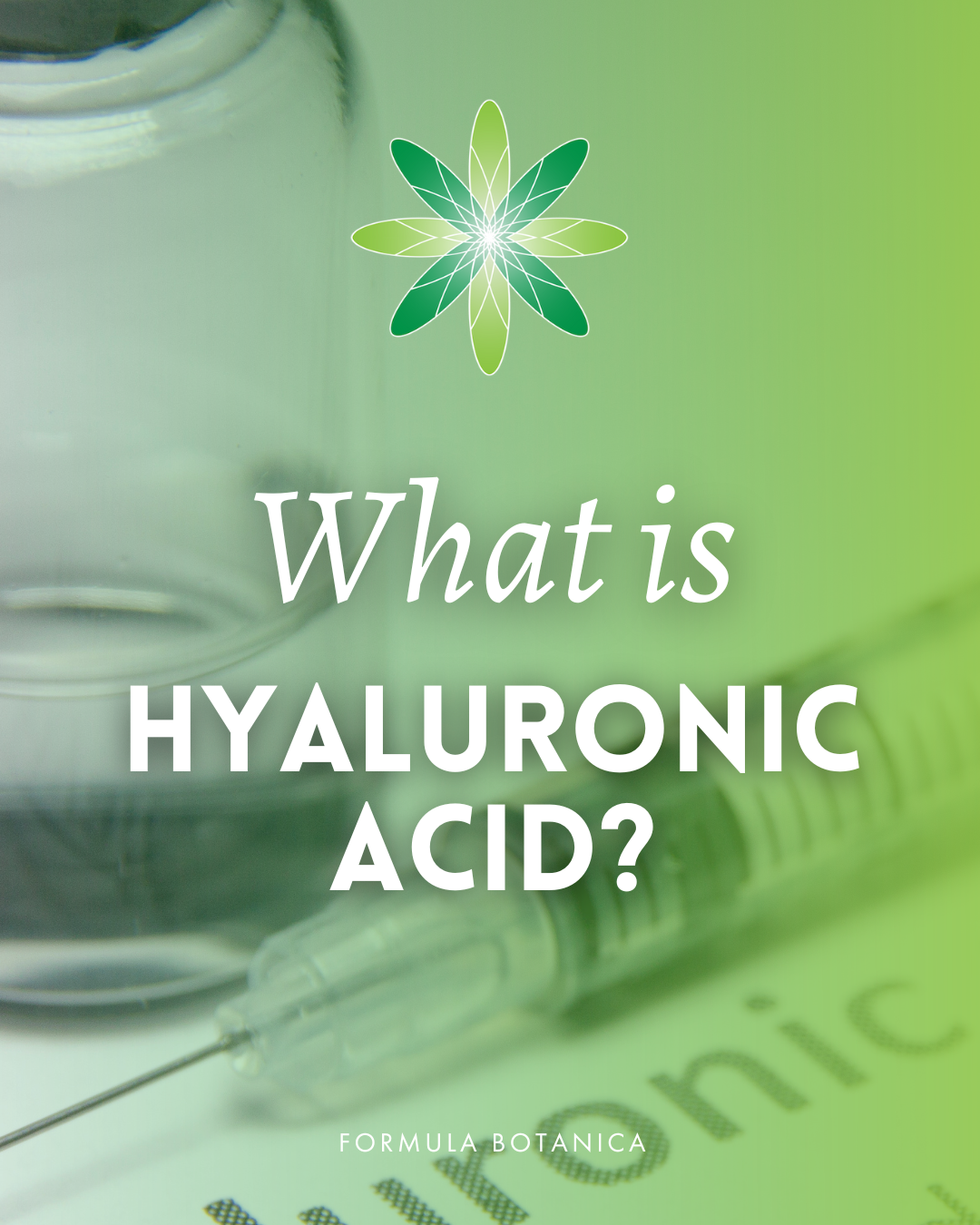
Hyaluronic acid is a polysaccharide discovered naturally within the pores and skin in its extra-cellular matrix, and can be a part of the pores and skin’s pure moisturising issue (NMF) together with different compounds corresponding to urea, lactic acid, fatty acids (ceramides). It due to this fact contributes to sustaining the pores and skin barrier.
The pores and skin holds round 50 p.c of our physique’s hyaluronic acid content material, so you’ll be able to sense already why it might have a key position to play in our pores and skin’s functioning.
Hyaluronic acid in cosmetics – its origins
Within the Nineteen Sixties, animal-sourced types of hyaluronic acid have been utilized in cosmetics. The most typical supply for each beauty and medical makes use of in that period was derived from rooster combs. Use of animal-derived hyaluronic acid has decreased over time as a result of moral considerations, potential allergenic reactions, and the event of extra sustainable and cruelty-free manufacturing strategies.
Immediately, hyaluronic acid is produced by way of bio-fermentation processes utilizing micro organism as a way to present moral and constant sources for the cosmetics trade. Nevertheless, do verify along with your provider about its origins.
How does hyaluronic acid hydrate our pores and skin?
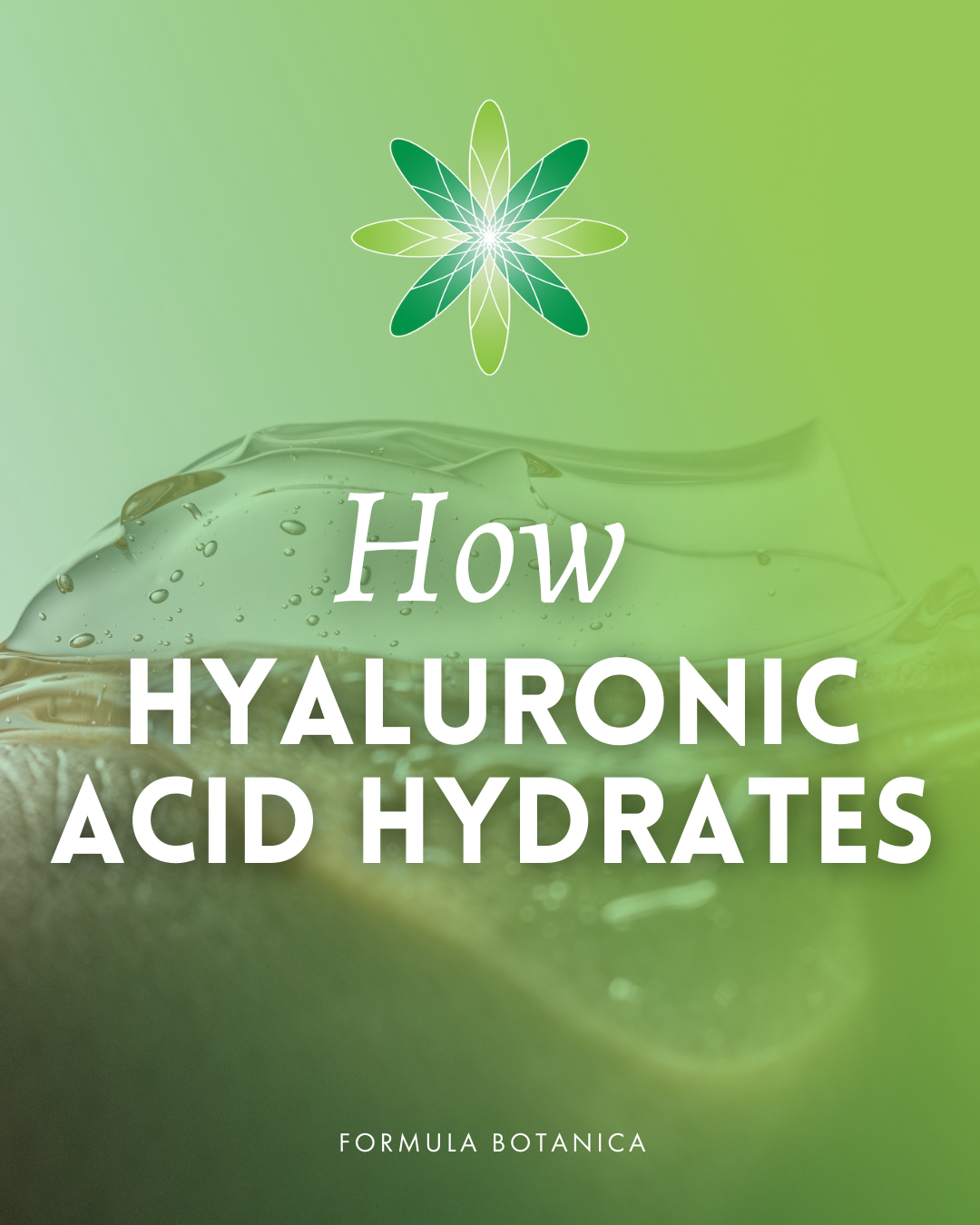
Hyaluronic acid’s magic lies in its skill to carry as much as 1000 instances its weight in water, making it the last word hydrating hero. It is a superb humectant and in contrast to different hygroscopic beauty components, its skill to draw and maintain water is much less depending on the surroundings round us; which means it performs excellently no matter the extent of humidity.
A beauty humectant is a useful, hygroscopic ingredient that hydrates the pores and skin because of its skill to draw and bind to water. The water supply can range: humectants can appeal to water from the humidity within the surroundings round them, and even from the pores and skin itself by pulling water from deeper layers to extra superficial layers.
Different humectants frequent in pure cosmetics are glycerine, sorbitol (a sugar alcohol), honey, propanediol (pure model), sodium lactate, and hyaluronic acid. See our information:
However there’s a draw back. As we age, our pores and skin’s pure manufacturing of hyaluronic acid reduces and degradation of the hyaluronic acid additionally will increase, leading to pores and skin dryness and dehydration. Together with hyaluronic acid in formulations might help revitalise the pores and skin’s moisture ranges, resulting in a extra luminous, plump complexion.
First, we have to discover the types of hyaluronic acid – together with, surprisingly you may suppose, its molecular weight – as a way to perceive the way it works its magic in our formulations.
Molecular magic: low- vs high-weight
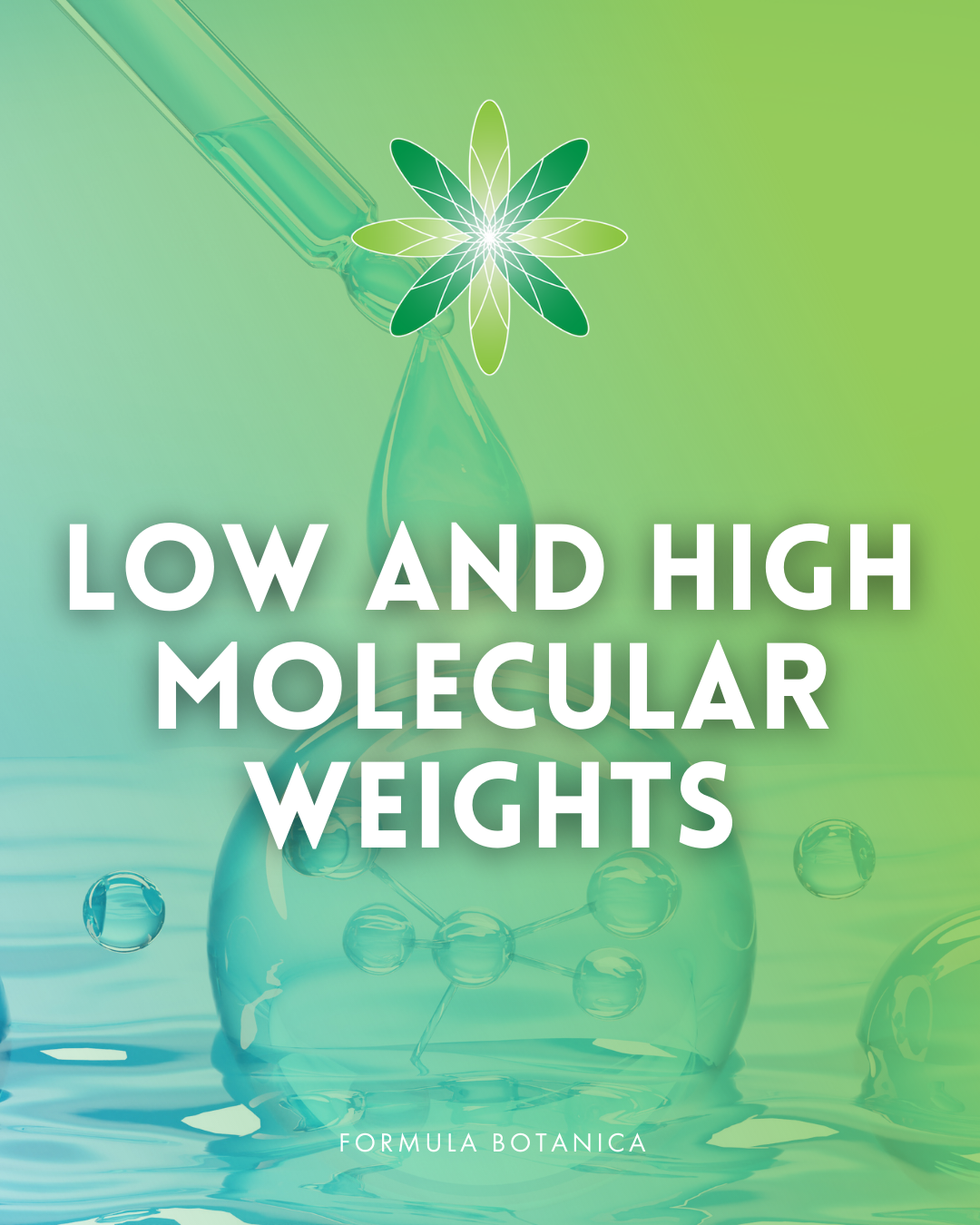
For formulators, the excellence between high and low molecular weight hyaluronic acid is essential to the artwork of formulating a super-hydrating beauty. On beauty ingredient provider websites, you might have seen low molecular weight (LMW-HA) and excessive molecular weight hyaluronic acid (HMW-HA) talked about and questioned what they have been.
Briefly, low molecular weight hyaluronic acid penetrates deeper into the pores and skin – staying on the epidermic degree – providing extra lasting hydration, whereas excessive molecular weight creates a topical, protecting barrier on the pores and skin’s floor providing short-term hydration and visual plumping of the pores and skin.
This dynamic duo of molecular weights ship each rapid and longer-term hydration, and you should use each in the identical formulation. There may be some debate concerning the effectiveness of utilizing both weight of hyaluronic acid in rinse-off haircare preparations, however some beauty corporations are offering proof of its hydrating powers even on this use.
We look at the molecular distinction in depth on our devoted “Mini-Lab” on hyaluronic acid over in our membership website, The Lab at Method Botanica. Register to be first to know when The Lab opens its doorways, so you’ll be able to benefit from the hyaluronic coaching module together with over 35 different in-depth subjects.
The way to formulate with hyaluronic acid
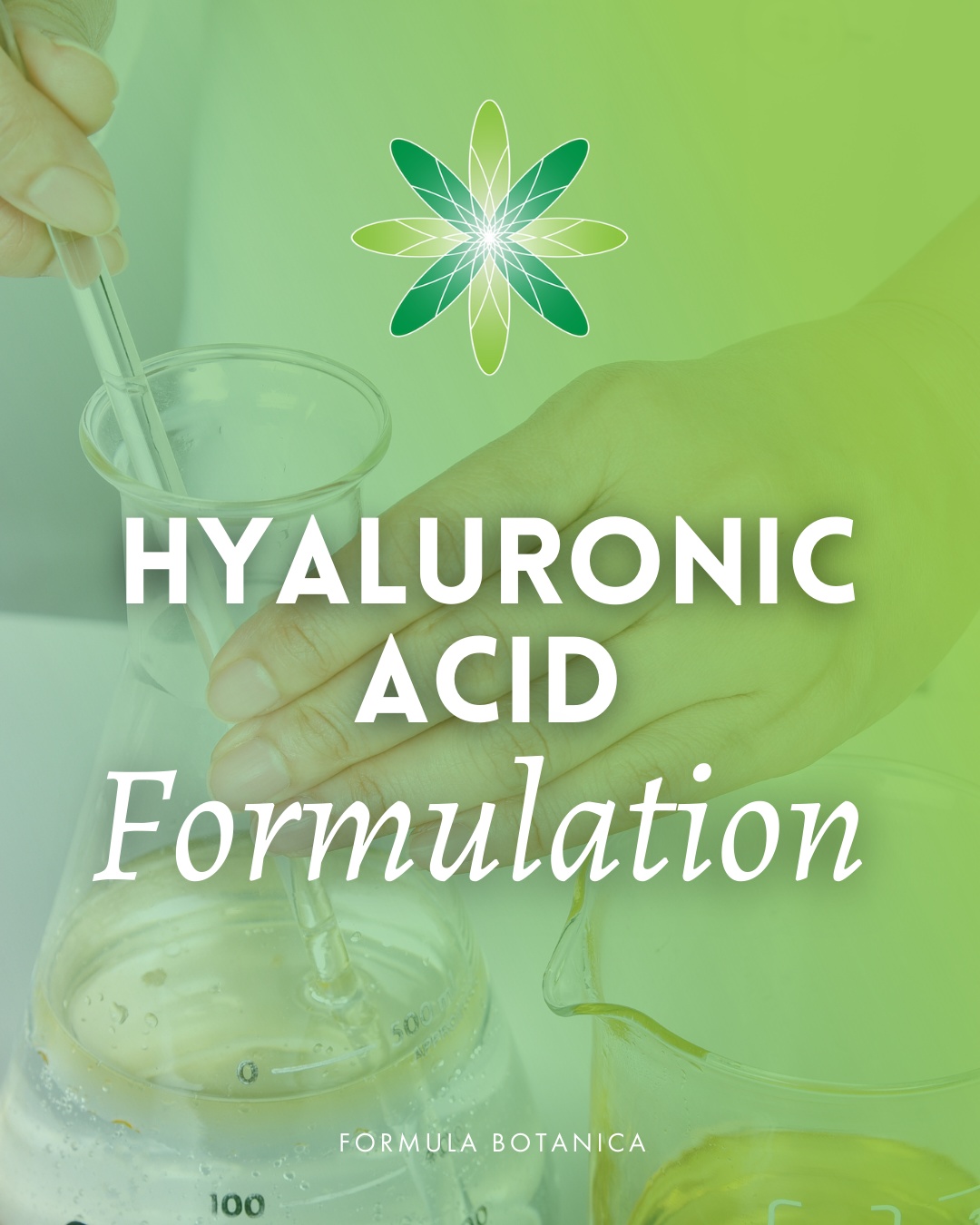
Now concerning the significance of its molecular weight, let’s take a look at the types of hyaluronic acid accessible to the beauty formulator.
INCI: Sodium hyaluronate
Hyaluronic powder: Yow will discover hyaluronic acid as a white powder or as a gel. We usually use hyaluronic acid between 0.01 and 1 p.c. You’ll need to hydrate the powder in water for some time (in a single day is good to make sure it’s totally dissolved).
Simply as we dissolve gums in glycerine, we will additionally decide to make use of glycerine as a wetting agent to assist make the hydration of hyaluronic powder simpler; or use emollients and humectants like propanediol for the job. There isn’t a purpose you’ll be able to’t mix humectants. Guarantee the burden of the diluent (water or glycerine) so you’ll be able to work out the maths so as to add the specified quantity of hyaluronic acid to your formulation.
Hyaluronic acid gel: If utilizing the gel type, be certain it’s safely preserved as chances are you’ll want so as to add one other preservative. Verify your provider’s data. Discover out extra about pure preservation in our Certificates in Pure Beauty Preservation, or within the weblog posts under:
Every little thing you needed to learn about pure preservatives
Working with hyaluronic acid in cosmetics
Hyaluronic acid is a good ingredient to formulate with, as you’ll be able to add it to gentle emulsions corresponding to lotions and serums. Mix it with different humectants or lively components for a synergistic impact.
There are just a few essential issues to notice about working with hyaluronic acid in cosmetics:
- Storage: The powdered type must be saved dry, so retailer it rigorously in an air-tight container away from humidity.
- Weighing: If you happen to make small batches of your formulation, you’ll need precision scales as you’re including very minute quantities of hyaluronic acid. It helps to make use of it in diluted and dissolved first to resolve this situation.
- Processing: Hyaluronic acid shouldn’t be processed on excessive shear, which suggests with a high-shear homogeniser. Ideally, use a hand whisk or overhead stirrer.
- Cool-down part: Add hyaluronic acid powder or gel to the cool-down part of your formulations.
- Gel formulations: Keep in mind that low molecular weight hyaluronic acid gained’t type a gel.
- pH vary: Hyaluronic acid is greatest used within the decrease pH ranges of round 5- 5.5.
Try these formulations for inspiration on the way to embrace hyaluronic acid:
The way to make a rose hydrating facial serum
The way to formulate a bakuchiol magnificence focus
Formulate a hydrating physique mist with tropical extracts
The way to make a scented pure physique yoghurt
Greatest Pure Alternate options to Hyaluronic Acid
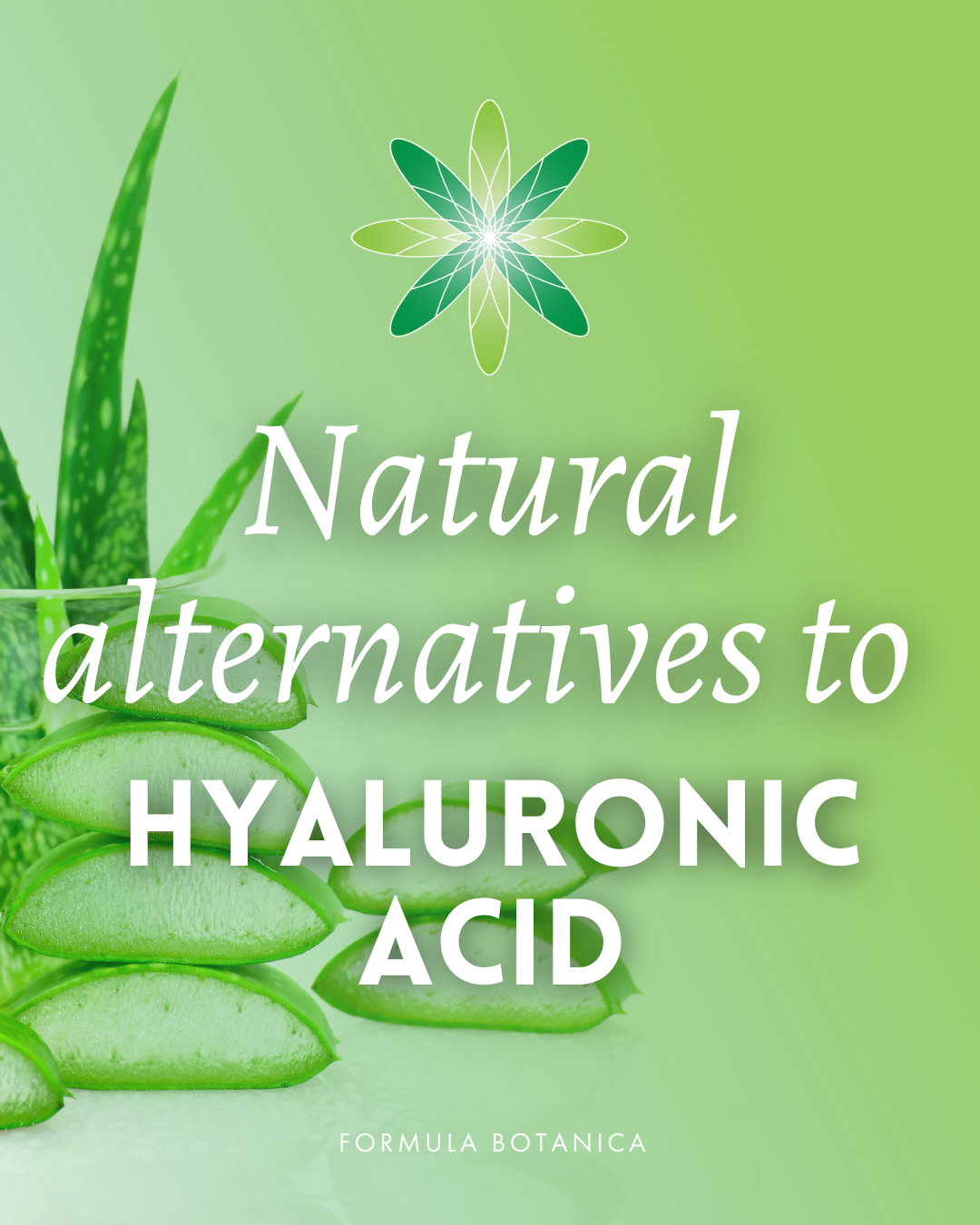
As most types of hyaluronic acid to be used in cosmetics are produced by way of bio-fermentation, chances are you’ll want to search pure, plant-derived options that provide the same hydration-boosting properties to hyaluronic acid. Listed here are just a few pure options to discover:
1. Aloe Vera
INCI: Aloe Barbadensis Leaf Juice Powder
One of the in style components in skincare, aloe vera is a soothing and hydrating ingredient, with a water content material starting from 99 to 99.5%. Since aloe vera powder is 200 instances extra concentrated than the gel, it gives a thirst-quenching impact. Use 0.1-1% aloe vera powder in your toners or moisturisers, or in gel-like merchandise by including a gelling agent. Discover out extra about aloe vera:
The formulator’s information to aloe vera
The way to make an aloe vera repairing mist
The way to formulate a soothing after-sun gel
The way to make a jasmine and aloe micellar water
2. Snow Mushroom
INCI: Tremella fuciformis polysaccharide
Typically labelled because the “plant-based different” to hyaluronic acid, snow mushroom has distinctive water-retaining properties. (Observe: funghi will not be vegetation, nevertheless, however their very own distinctive organism class.) Due to their polysaccharides, snow mushrooms retains the pores and skin hydrated and supple, and in addition reduces indicators of pores and skin ageing indicators.
Use snow mushroom in lotions and serums by diluting the powder in water earlier than including it to your cool-down part. Discover out extra about this lively ingredient within the Mini-Lab on Mushroom Components.
3. Panthenol
INCI: Panthenol
Pure panthenol is one other humectant that retains the pores and skin moisturised. Additionally referred to as pro-vitamin B5, it promotes pores and skin regeneration and strengthens the pores and skin barrier. It penetrates the pores and skin and is transformed to D-pantothenic acid. It’s accessible as a water-soluble powder (L-Panthenol) or a water-soluble liquid (D-Panthenol) so as to add within the cool-down part.
Different options
There are numerous extra hyaluronic acid options you can formulate with, corresponding to birch sap, vegetable collagen, and oat silk, which give the pores and skin with as a lot hydration as hyaluronic acid. As a pure formulator, it’s critical to maintain updated with ingredient tendencies and be taught to formulate with new components.
Additional studying and references
Nobile et al, 2014. Anti-aging and filling efficacy of six varieties of hyaluronic acid primarily based dermo-cosmetic therapy.
Bravo et al, 2022. Advantages of topical hyaluronic acid for pores and skin high quality and indicators of pores and skin ageing.
Juncan et al, 2021. Benefits of hyaluronic acid and its mixture with different bioactive components in cosmeceuticals.
Essendoubi et al, 2016. Human pores and skin penetration of hyaluronic acid of various molecular weights as probed by Raman spectroscopy.
Saleem et al, 2022. Aloe vera gel impact on pores and skin and pharmacological properties.
Boo YC, 2021. Mechanistic Foundation and Medical Proof for the Functions of Nicotinamide (Niacinamide) to Management Pores and skin Getting older and Pigmentation.
Ma et al, 2021. A assessment on the manufacturing, construction, bioactivities and utility of Tremella polysaccharides.
Camargo Jr. et al, 2011. Pores and skin moisturizing results of panthenol-based formulations.
[ad_2]